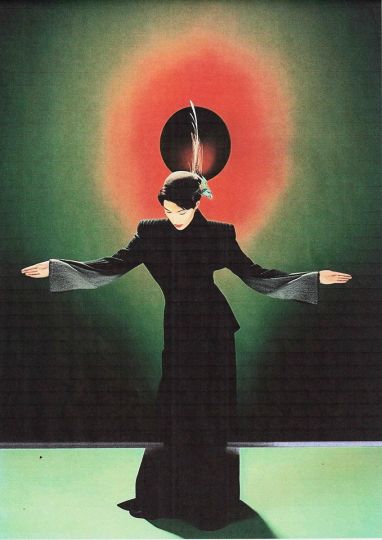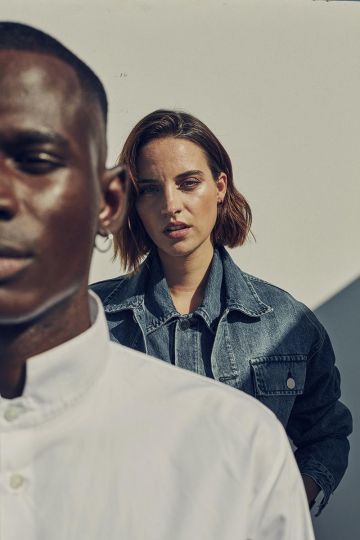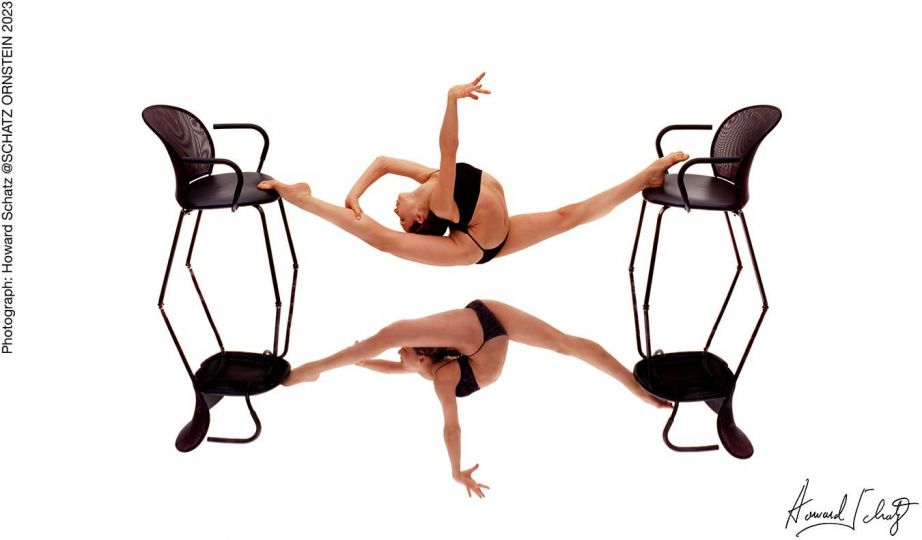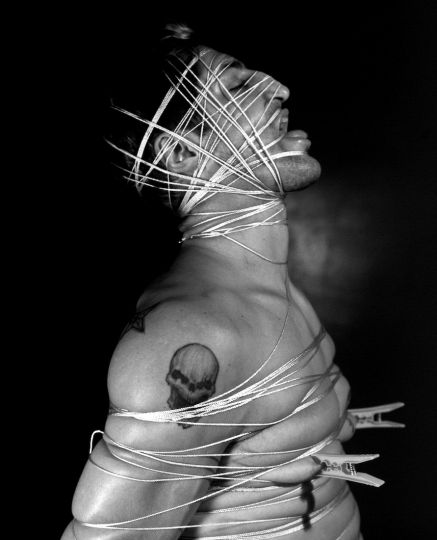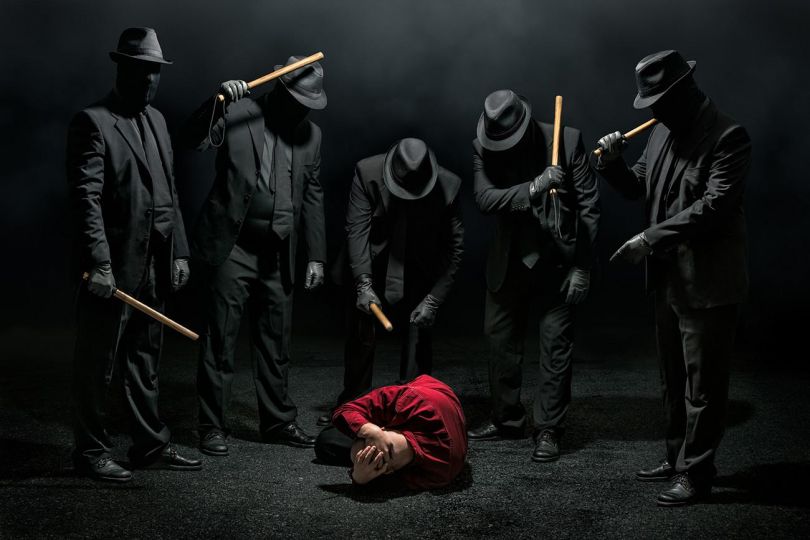Mario Testino belongs to the most successful and renowned fashion photographers of our time. After studying economics in Peru and San Diego, he embarked on a career in photography, moving to London to follow the footsteps of his idol, Cecil Beaton. Testino’s first work appeared in US Vogue in 1983, and by the next decade his career was at its peak. Through collaborations with Tom Ford, Carine Roitfeld, Gucci, his affiliation with Anna Wintour as well as his legendary portrait sessions with Diana, Princess of Wales, the British Royal family, and other royal families, Testino became an irreplaceable part of the international fashion scene. With his signature sassy, sexy, high-gloss images, Testino conquered the world of fashion magazines in no time.
After working together at the Helmut Newton Foundation back in 2017, we recently got a chance to catch up and discuss what’s new. Read on for more.
Nadine Dinter : Your latest show in Milan is called Unfiltered, and will gradually unfold in two exhibition parts. Which part is more exciting for you – the one showcasing your more iconic images, or the one with mostly unpublished works, revealing a more spontaneous and personal side of your oeuvre?
Mario Testino : I find the most interesting thing of anybody’s work is to be able to see a wide range of what they have done, because one thing always influences the other. A lot of my personal work has been a kind of rehearsal for what I go on to do in my commercial or public work, which I find quite interesting to see. For instance, all my party snaps were, in a funny way, exercises to loosen my hand when I take pictures and make it more fluid and rapid. So, it’s quite nice to see them placed in dialogue with one another.
Over the last 40 years you have been in business, you have worked with all of the iconic models, stars like Madonna and Lady Gaga, and seen your works published by all major international magazines, above all Vogue USA. Which encounters or shoots do you remember the best, especially after all those years?
MT : I had a relationship with Vogue for many years, but it was essentially based on my relationship with the editors. I have always thought of my work in terms of who my editors were. The time I spent in the 90s with Carine Roitfeld had, perhaps, the most influence on my work. People started looking at it differently, once they saw the work I had done with Carine. An example of this would be the Gucci years, with Carine and Tom Ford, when we applied our combined vision to Gucci. Of course, the Princess Diana images are some of my most iconic work. They are an example of my approach to the people I photographed, seeing them as individuals and making them feel comfortable. I worked around them and their personalities, applying everything I learned to capture their energy. The Madonna pictures for Versace were the beginning of my personal style being used for commercial work, because I wanted to treat Madonna as an individual, and not as a model.
You shot one of the most outrageous ad campaigns of the 1990s, for Gucci. Everyone wanted to have those wildly cut-out dresses, the lacquer boots, and fabulous outfits. Would you say that the resulting iconic images, venerated by fashion aficionados ever since, is due to mainly to the symbiosis between the designer Tom Ford and yourself, as the photographer?
MT: The most amazing thing about working with either a collaborator, a client, or a stylist, like in this case Tom Ford, is when you actually manage to find a place where you coexist, liking the same references and ideas. Tom and I worshipped time periods like the ‘70s and the work of people like Helmut Newton; we liked sensuality mixed with elegance, mixed with fun, and mixed with fashion. That point of departure made our work fit perfectly as a collaboration between the two of us.
In your new show, visitors will find calm and poetic images, like the one with Sienna Miller floating through a vast hall filled with marble sculptures, but also loud and colorful images, like the portrait you took of Carmen Kass, with her red lips, red, furry fashion, and a strong facial expression. When choosing how to stage a photo, do you usually work spontaneously, following your gut feeling, or do you develop your photographic vision in close collaboration with the client or magazine?
MT: When I go to a shoot I do a lot of research in advance, and I prepare, so I know what I am going to deliver. At the same time, I leave room for a lot of spontaneity to be able to react to the moment. I can go to set with a plan, but if I see something really different to what I had envisioned, I react to my gut feeling in that moment. I think it’s important to have both preparation and leave space for spontaneity. Of course, it’s inevitable with commercial work that you spend a lot of time speaking with the client, the editor, or stylist that you’re working with to develop the vision of the shoot.
In 2017, you had a unique vision for your exhibition Undressed at the Helmut Newton Foundation in Berlin. The main aspect was that your images were printed larger than life, and mounted directly onto the walls, like a huge walk-in magazine. Viewers were completely knocked off their feet and the media wrote rave reviews. How do you feel about that show in retrospect? How did this unconventional way of presenting your work change how you see – and would like to see – your own images (for example, due to the enhanced dimensions)?
MT: I have printed most of my work quite large from the beginning, because I realized that a lot of what I produced was made to go in magazines, and the distance between the viewer and the magazine was such that your focus was just on the magazine. I wanted to recreate that sensation when you go into a museum and see the work. The distance between the viewer and the piece would also be so strong that it takes all attention away from the surroundings. When I visited the Helmut Newton Foundation, I noticed the difference between my work, which is so often printed, framed, and presented in a highly glossed manner, and Newton’s artwork hugging the walls. Framed or not, it is incredibly strong, almost giving more attention to the image and less to the presentation. I thought it would be great following that example to wallpaper the walls of the galleries.
My exhibition very much represented my work from the ‘90s. I felt that there was growing interest in that decade and I wanted to pinpoint exactly what made my work have a particular flair. The name Undressed was a reference to all the work inspired by my years in Brazil as a youth, which I often talk about in interviews. During that time, the girls would always go out in an evening dress – but it could fall away, revealing a bikini underneath, so they could just jump into the pool. In the ‘90s when I had established in my style, I wanted to bring these connotations to my work. Even though the girls were dressed, it was always about the body and beauty of these people, and finding themselves half naked was part of my vocabulary.
Your latest book, Ciao – an homage to Italy and its beauty – was published by TASCHEN in 2020, and your new show in Milan picks up on its theme, including many works from the publication. When did your love affair with Italy start? Please share 1 or 2 special moments or encounters related to those images that resonate with you.
MT: I started my career in the fashion world when I encountered Franca Sozzani, who was then the editor-in-chief of Lei and Per Lui magazines, which were like the young Vogue and L’Uomo Vogue in Italy. Franca trained me to work in the business from not just a photographer’s point of view, but managing the whole photoshoot. She gave me a budget and said, “Do what you want to do, but whatever you spend on flying people in or getting an expensive location, you’ll have to understand that the rest of the shoot will need to be done very creatively.”
Working with her really helped to define what my taste was. I realized what I liked of the old world and then blended it with the Brazilian side, which represented the new world.
Of course, Italy then became part of my life; that’s why the book is divided into three sections. “In Giro” is about exploring the city and discovering what it’s made of; “Alla Moda” is about the fashion world; and finally, “Al Mare” is about all the years enjoying the lifestyle of Italy on my personal holidays.
My love affair with Italy has been going on for 40 years: it started in 1980 when I first went to Italy for work, and I have been returning ever since. Apart from the Franca Sozzani encounters, Madonna introduced me to Versace, and later also with Dolce & Gabbana I got to know the south of Italy, which I hadn’t been aware of before, and which I love to this day – I have made my home in Sicily.
What are you next projects and/or exhibitions?
MT: Right now, I have a show at Hamiltons Gallery in London, which started on 3 November. It is showing a part of my current project, called A Beautiful World, which is a search around the world for traditions that represent the idea of belonging. We are born into a certain geographical place that determines the country we belong to, but we also go through life belonging to the professions we work in, to a religion and how we want our lives to be. These are things I have been exploring a lot in my recent work.
Apart from that, I am showing at the Nicola Erni Collection in Switzerland, where there is a whole salon dedicated to my work, as well as at 29 Arts in Progress in Milano, which, as you know, is doing two exhibitions in one.
In your hometown of Lima, Peru, you founded MATE – Museo Mario Testino – in 2013, and you have been actively supporting select charities, such as Natalia Vodianova’s Naked Heart Foundation. What’s next on the program at MATE?
MT: Sadly, MATE was closed due to Covid-19 as it relied so much on tourism. At the moment, there are not any aims to reopen it because Peru has been greatly affected by the pandemic and the tourism industry will take a while to resume. I continue to support Natalia Vodianova’s project of building parks. We’re about to open one in the southern region of Peru, called Arequipa, and I hope to be able to do more in the country.
What’s your advice to young and aspiring photographers who want to make it in the world of fashion photography?
MT: For a photographer, the most important thing is to discover what we like and who we are and then try to put it in our pictures. I notice that today everybody is a photographer and most people copy what other people do in photography, trying to belong to a trend. You should have your own point of view because that’s the only way you will stand out.
Make sure to follow Mario Testino on Instagram at @mariotestino and check out the following shows:
“Mario Testino. Unfiltered”
Part 1: through 27 November 2021
Part 2: 2 December 2021 – 29 February 2022
@ 29 Arts In Progress, Via San Vittore 13
20123 Milan, Italy
“Mario Testino: South Americana”
3 November 2021 – 8 January 2022
@ Hamiltons Gallery, 13 Carlos Place
London, W1K 2 EU, UK








